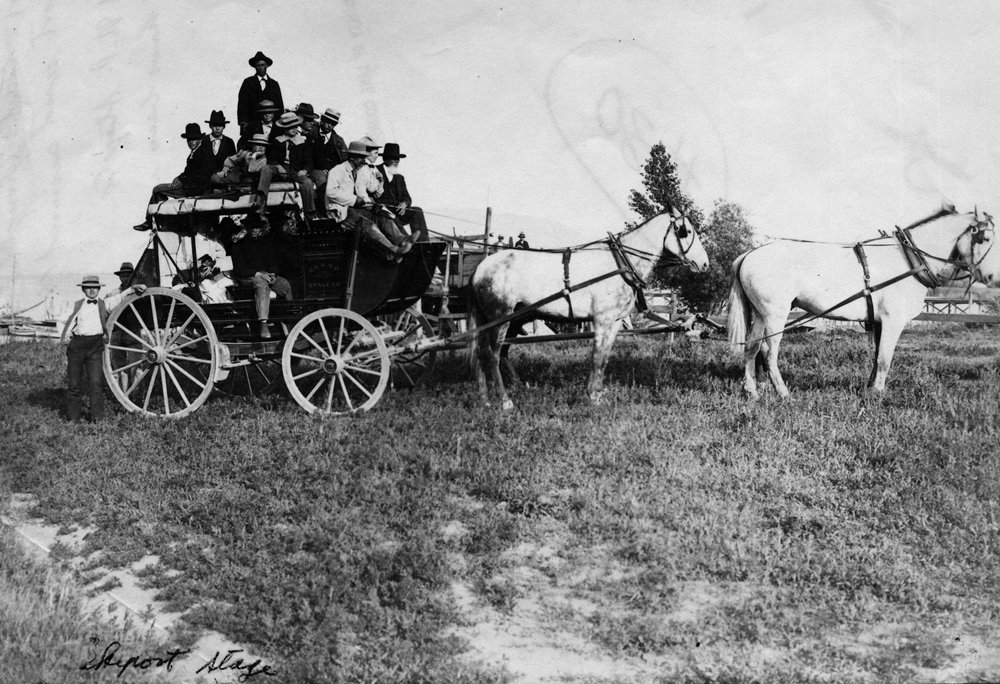
History of the Ely Stage Stop
1859: James Jamison settled on about 480 acres south of Mt. Konocti. He raised cattle and built large corrals to temporarily hold cattle moving through the area. He and his wife ran a horse changing station to provide fresh horses to the stage lines traveling between Middletown, Lower Lake, Kelseyville and Lakeport. He built a house which also served as a stage stop. Guests were cared for by Jamison’s wife Mary Annett. The family lived at the house and farmed the area for 14 years. They named the place "Lost Springs Ranch". Cattlemen from around the lake brought their herds to the Jamison Place for staging before being driven over Mt. Saint Helena to the railhead at Calistoga.
1868: The Jamison Stage Stop was the rallying point for a group of 325 vigilantes who gathered before riding to Lower Lake to dismantle a dam built on Cache Creek. The dam was constructed by San Francisco investors (known as the Clear Lake Water Company) and it’s spillway stood 15 feet above Clear Lake's natural level. During two rainy seasons, farms were flooded, orchards destroyed, and houses abandon. Malaria and diphtheria hit many. One family lost 7 children. On November 14th, 1868, the 325 armed men peacefully dismantled the dam. The water company sued 184 Lake County citizens, but a jury found that the dam was a nuisance and that the people had the right to take it down.
1878: Jamison moved into Kelseyville where he served 2 terms as County Supervisor. In 1887, Benjamin Ely Sr. and Jr. purchased the Lost Springs Ranch and surrounding lands totaling 1,350 acres. The Ely family had a large farming operation near Winters so Mr. Ely put his daughter Sally Ann (Sarah) McClure and her husband James in charge of the Lake County properties. James and Sarah ran the old Jamison stage stop and opened a store which sold farm fresh goods. Eventually a post office was added that operated till 1890.
Though Benjamin Ely was listed as “postmaster” on paper, Sarah McClure actually ran the post office. Sarah McClure also ran the public house, store, and taught school to the local ranch kids. For 30 years, it was known as the “Town of Ely”.
1908: The property was sold to Philo Ogden and had many owners and served many purposes over the years. Though the ranch was renamed the S Bar S ranch, it remained a cattle ranch until recently. As horse and stage travel gave way to automobiles (1920-40), the old stage stop served as a hotel, restaurant, gas station, and store along the newly paved HWY 29.
1950: The S Bar S ranch was purchased by Ernest Kettenhofen who ran cattle and rented out the old stage stop residence.
2000: The ranch was purchased by Beckstoffer Vineyards and much of the land has recently been converted to grapes.
2002: Caltrans developed plans to widen HWY 29, prompting a historical evaluation of the area. The stage stop was not considered significant enough to warrant preservation. Not realizing the core of the structure was the original 1860 Jamison house, the reviewing party mistakenly listed the structure as being built between 1913 and 1938.
2006: Through community support, the Ely Stage Stop structure was moved and restored on property donated by the Beckstoffer family with funding assistance provided by the Kettenhofen Family Trust and Lake County.
2011: Though the land and structure are owned by Lake County, the management of the Ely Stage Stop and Country Museum was turned over to the Lake County Historical Society and opened to the public for the first time.
1870's maps showing stagecoach roads.
Stopping to water the horses.
Rounding up the cattle for the annual cattle drive.
James and Mary Jamison in the Kelseyville Pioneer Cemetery.
The Jamison/Ely house as it looked in 2005 before the move.
The original Jamison/Ely house (minus all the more recent additions) rolling across the field to its current location.






